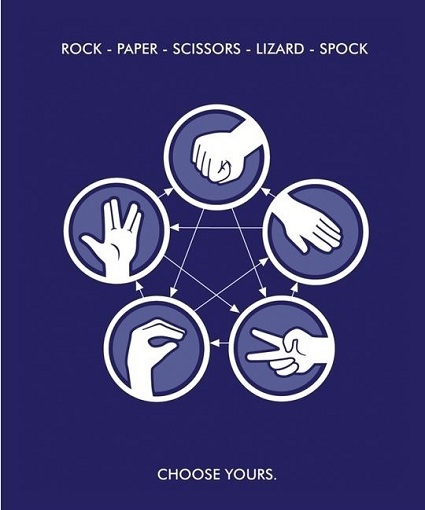Archive for the ‘brainfood’ Category
Glowing Plant
Author: Christoph Schwinghammer12 May

Ich bin gerade auf ein ziemlich interessantes Kickstarter Projekt gestoßen.
Kickstarter Projekt: Glowing Plants
Official Blog: glowingplant.com/team
Designing and creating REAL glowing plants by adding bioluminescence genes using Synthetic Biology methods and Genome Compiler software.
Immortal jellyfish
Author: Christoph Schwinghammer9 Jul

Biological immortality
Most jellyfish species have a relatively fixed life span, which varies by species from hours to many months (long-lived mature jellyfish spawn every day or night; the time is also fairly fixed and species-specific). The medusa of Turritopsis nutricula is the only form known to have developed the ability to return to a polyp state, by a specific transformation process that requires the presence of certain cell types (tissue from both the jellyfish bell surface and the circulatory canal system). Careful laboratory experiments have revealed that all stages of the medusae, from newly released to fully mature individuals, can transform back into polyps. The transforming medusa is characterized first by deterioration of the bell and tentacles, with subsequent growth of a perisarc sheet and stolons, and finally feeding polyps. Polyps further multiply by growing additional stolons, branches and then polyps, to form colonial hydroids. This ability to reverse the life cycle (in response to adverse conditions) is probably unique in the animal kingdom, and allows the jellyfish to bypass death, rendering Turritopsis nutricula potentially biologically immortal. Studies in the laboratory showed that 100% of specimens could revert to the polyp stage, but so far the process has not been observed in nature, in part because the process is quite rapid and field observations at the right moment in time are unlikely. In spite of this remarkable ability, most Turritopsis medusae are likely to fall victim to the general hazards of life as plankton, including being eaten by other animals, or succumbing to disease.
[source]
Rock-Paper-Scissors-Lizard-Spock
Author: Christoph Schwinghammer20 Sep
Bored by casual Rock-Paper-Scissors?
Pimp it up the Sheldon Cooper way:

FYI: There exists an official Rock-Paper-Scissors League in, you already guessed it, USA – USARPS League
Khan Academy
Author: Christoph Schwinghammer28 Mar
“It is our mission to accelerate learning
for students of all ages.”
The Khan Academy is a not-for-profit educational organization created by Salman Khan. With the stated mission of “providing a high quality education to anyone, anywhere”, the website supplies a free online collection of over 2,200 micro lectures via video tutorials stored on YouTube teaching mathematics, history, finance, physics, chemistry, biology, astronomy, and economics.
Salman Khan was born and raised in New Orleans, Louisiana. His father is from Barisal, Bangladesh and his mother was born in Kolkata, India. Khan holds three degrees from the Massachusetts Institute of Technology: a BS in mathematics, a BS in electrical engineering and computer science, and an MS in electrical engineering and computer science. He also holds an MBA from Harvard Business School. In late 2004, Khan began tutoring his cousin Nadia in mathematics using Yahoo!’s Doodle notepad. When other relatives and friends sought his tutorial, he decided it would be more practical to distribute the tutorials on YouTube. Their popularity there and the testimonials of appreciative students prompted Khan to quit his job in finance in 2009 and focus on the Academy full-time. Bill Gates once said that “I’d say we’ve moved about 160 IQ points from the hedge fund category to the teaching-many-people-in-a-leveraged-way category. It was a good day his wife let him quit his job.”
As of December 2009, Khan’s YouTube-hosted tutorials receive a total of more than 35,000 views per day. Each video runs for approximately ten minutes. Drawings are made with SmoothDraw, which are recorded and produced using video capture from Camtasia Studio. Khan eschewed a format that would involve a person standing by a whiteboard, desiring instead to present the content in a way akin to sitting next to someone and working out a problem on a sheet of paper: “If you’re watching a guy do a problem [while] thinking out loud, I think people find that more valuable and not as daunting.” Offline versions of the videos have been distributed by not-for-profit groups to rural areas in Asia, Latin America, and Africa. While the Khan Academy’s current content is mainly concerned with pre-college mathematics and physics, Khan states that his long-term goal is to provide “tens of thousands of videos in pretty much every subject” and to create “the world’s first free, world-class virtual school”.
The Khan Academy also provides a web-based exercise system that generates problems for students based on skill level and performance. Khan believes his academy points to an opportunity to overhaul the traditional classroom by using software to create tests, grade assignments, highlight the challenges of certain students, and encourage those doing well to help struggling classmates.
His low-tech, conversational tutorials — Khan’s face never appears, and viewers see only his unadorned step-by-step doodles and diagrams on an electronic blackboard — are more than merely another example of viral media distributed at negligible cost to the world. Khan Academy holds the promise of a virtual school: an educational transformation that de-emphasizes classrooms, campus and administrative infrastructure, and even brand-name instructors.
Several people have made $10,000 contributions; Ann and John Doerr gave $100,000; total revenue is about $150,000 in donations, and $2,000 a month from ads on the Web site. As of September 2010, Google announced they would be providing the Khan Academy with $2 million to support the creation of more courses and to enable the Khan Academy to translate their core library into the world’s most widely spoken languages, as part of their Project 10^100. Salman is aiming at making nothing less than “tens of thousands” of tutorials offering the “first free, world-class virtual school where anyone can learn anything.”
[source]
Zombie Ants
Author: Christoph Schwinghammer7 Mar
BRAAAAAAAINS!

Nach “Zombie Snails” wurden jetzt auch “Zombie Ants” gefunden und zwar in Brasilien. Waren es bei den Schnecken noch Parasiten, sind es bei den Ameisen nun Pilze, die es auf die Gehirne ihrer Opfer abgesehen haben. National Geographic scheint auch einen Zombie Schwerpunkt zu haben, denn abermals sind Sie es die davon zuerst berichten…
A stalk of the newfound fungus species Ophiocordyceps camponoti-balzani, grows out of a “zombie” ant’s head in a Brazilian rain forest.
Originally thought to be a single species, called Ophiocordyceps unilateralis, the fungus is actually four distinct species—all of which can “mind control” ants—scientists announced Wednesday.
The fungus species can infect an ant, take over its brain, and then kill the insect once it moves to a location ideal for the fungi to grow and spread their spores.
All four known fungi species live in Brazil’s Atlantic rain forest, which is rapidly changing due to climate change and deforestation, said study leader David Hughes, an entomologist at Penn State University.
Hughes and colleagues made the discovery after noticing a wide diversity of fungal growths emerging from ant victims, according to the March 2 study in the journal PLoS ONE.
“It is tempting to speculate that each species of fungus has its own ant species that it is best adapted to attack,” Hughes said.
“This potentially means thousands of zombie fungi in tropical forests across the globe await discovery,” he said. “We need to ramp up sampling—especially given the perilous state of the environment.”
—Matt Kaplan
[source]
Terminator Conspiracy Theory
Author: Christoph Schwinghammer26 Feb
Dem Sci-Fi Nerd in euch wird Terminator ein Begriff sein. Wer damit überhaupt nichts anfangen kann, darf die Story hier nachlesen. Im Grunde geht es darum, dass sich die Menschheit immer mehr auf Technik, Maschinen und Computer verlässt und so eine immer größere Abhängigkeit und Selbstentmündigung entsteht. Dies gipfelt in der Übernahme der weltweiten Netzwerke durch ein Computerystem und Satellitennetzwerk, das dadurch die komplette Kontrolle erlangt – Skynet! Entwickelt wurde Skynet (laut Filmstory) von Cyberdyne Systems Corporation, eine Firma die unter anderem Verteidigungsroboter und militärische Abwehrsysteme herstellt (was schlussendlich in die Produktion von Terminatoren endet).

Soweit so gut, dass der Terminatorchip aus der Zukunft als Basis dieser Entwicklung in der Vergangenheit dient ist Teil einer viel größeren Komplexität (Time Travel Paradox). Dies soll uns aber auch nicht weiter beschäftigen, denn der eigentliche Grund dieses Beitrages sind die zwei Firmen, die auch außerhalb der fiktiven Filmwelt existieren.
- Skynet (www.skynet.com) – Telesat is one of the largest and fastest growing providers of reliable and secure satellite communications solutions
- Cyberdyne (www.cyberdyne.jp) – robot suits for the future
Nur Zufall?! – Dies zu beurteilen überlasse ich euch selbst… 😉
Weiters sei noch erwähnt, dass die Terminator Geschichte einige Parallelen mit Stanley Kubricks “2001: A Space Odyssey” aufweist. Der eigentliche Protagonist des Films ist dabei der Computer HAL9000 (Heuristically programmed ALgorithmic computer). Das derzeitige Spitzenprodukt der Firme Cyberdyne stellt der HAL Robot Suit (Hybrid Assistive Limb®) dar. 😀

Tetris Online
Author: Christoph Schwinghammer7 Jan

Dank Tetris Friends, der offiziellen Tetris Online Plattform ist es nun auch möglich Tetris im Browser zu spielen. Zahlreiche Modi stehen bereit (Marathon, Battle 2P, Arena, Battle 6P, Survival, Survival 5P, Sprint, 1989, uvm.) und ein Ranking/Achievementsystem trackt euren Progress. Außerdem existieren eine Menge Multiplayerpartien, um euch mit Freunden oder Leuten aus der ganzen Welt zu messen. Es macht wirklich Spaß und ein Battle 2P Game dauert gerade mal zwei Minuten. Also für ein schnelles Spiel für zwischendurch ideal! Einzig der Schwierigkeitsgrad lässt noch etwas zu wünschen übrig – too easy! 😉
Give it a try!
http://www.tetrisfriends.com
Portal is FREE!
Author: Christoph Schwinghammer13 May
Portal used to cost money. Until May 24th, it’s free. End of story.
Well, technically speaking, there are some strings attached. Fortunately, they’re entirely decorative. We just like the way they look, swaying in the gentle breeze created by a million people simultanously fainting from shock at the news that Portal is free. Now you have no reason not to try Portal.
“I have a reason,” some of you are probably typing into an angry email. “You see, sir, I own a Mac.”
Well guess what: For the first time ever, Portal is also available for the Mac.
“Capital news! But the excellent puzzle adventure Portal won over 40 Game of the Year awards; Surely it must cost at least five or six hundred dollars.”
You’d think that, especially since it actually won over 70 Game of the Year Awards. But, like we keep saying, Portal is free. Free on the Mac. Free on the PC. But only until May 24th. So you only have a few days to decide if your free copy of Portal is worth the price we’re currently charging.
[Source]
The cake is a lie! – The cake is not a lie!
DOWNLOAD NOW! (requires a free Steam account)
Es gibt wirklich aboslut keine Ausrede diese Gelgenheit auszulassen, außer natürlich, ihr habt das Game bereits.
Snail Zombies
Author: Christoph Schwinghammer4 Sep
Zombies erfreuen sich seit Jahrzehnten einer unglaublichen Beliebtheit: Filme, Bücher, Computerspiele,… Ein Ende ist nicht in Sicht – im Gegenteil – in der letzten Zeit sind haben sie sogar enorm an Popularität zugenommen. Bei uns Menschen bleiben die Geschichten und Erzählungen rund um das Zombie Dasein Fiktion, im Tierreich hingegen sieht das etwas anders aus:
Leucochloridium variae, common name brown-banded broodsac, is a species of a parasite that invades snails and makes their eye stalks swollen, pulsating and colourful.
This maggot-resembling feature attracts birds. The bird rips off the eye stalk and eats it and later on the parasite’s egg is dropped with the bird’s feces. Similar life-histories are found in most species in the genus Leucochloridium including Leucochloridium paradoxum.
The snail regenerates a replacement eye stalk, which also becomes infected by the parasite.
See the Leucochloridium variae in action:
National Geographic Source
THX Wolfi
Hail the potato
Author: Christoph Schwinghammer19 Nov
Neben dem Internationalen Jahr der Sprachen, dem Internationalem Jahr des Planeten Erde und dem Internationalem Jahr der sanitären Grundversorgung ist 2008 auch das Internationale Jahr der Kartoffel! (Ja, ich sag Kartoffel dazu und nicht Erdapfel, gehört sich zwar nicht für einen Österreicher ist mir aber egal. Immerhin differenziere ich mich damit klar von unseren französischen Nachbarn!) Jedenfalls wurde ich mir dieser Tatsache erst heute bewusst und muss deshalb natürlich umgehend verbreitet werden:
Hail the potato, hail the french fries, hail the potato wedges, hail the potato salade, hail the chips, hail the baked potatos, hail the potato bread,…
A hidden treasure which will kick poverty´s ass:
more infos:
http://www.potato2008.org
http://www.unesco.at/int_jahre.htm
Links
Archives
- May 2015
- October 2014
- May 2014
- April 2014
- March 2014
- February 2014
- January 2014
- June 2013
- May 2013
- March 2013
- February 2013
- December 2012
- November 2012
- September 2012
- August 2012
- July 2012
- May 2012
- April 2012
- March 2012
- February 2012
- January 2012
- December 2011
- November 2011
- October 2011
- September 2011
- August 2011
- July 2011
- June 2011
- May 2011
- April 2011
- March 2011
- February 2011
- January 2011
- December 2010
- November 2010
- October 2010
- September 2010
- August 2010
- July 2010
- June 2010
- May 2010
- April 2010
- March 2010
- February 2010
- January 2010
- December 2009
- November 2009
- October 2009
- September 2009
- July 2009
- June 2009
- May 2009
- April 2009
- March 2009
- February 2009
- January 2009
- December 2008
- November 2008
- October 2008
- September 2008
- August 2008
- July 2008
- June 2008
- May 2008
- April 2008
- March 2008
- February 2008
- January 2008
- December 2007
- November 2007
- October 2007
- September 2007
- August 2007
- July 2007
- June 2007
- May 2007
- April 2007
- March 2007
- February 2007
- January 2007
- December 2006
- November 2006
- October 2006
- September 2006
- August 2006
- July 2006
- June 2006
- May 2006
- April 2006
- March 2006
- February 2006
- January 2006
- December 2005
- November 2005
- October 2005
- September 2005
- August 2005
- July 2005
- June 2005











